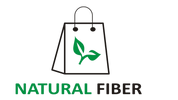Europe’s demand for natural fiber products is surging. Explore B2B market size, key sectors, pricing trends, and how banana fiber & agri-waste textiles fit the shift to circular supply chains.
European buyers brands, converters, retailers, hospitality groups, and packaging innovators—are actively transitioning away from virgin plastics and fossil-based synthetics. Stricter EU sustainability legislation, Scope 3 emission pressure, ESG-linked financing, and conscious consumer demand are converging to create one of the largest global opportunities for natural fiber products in the B2B market. For suppliers in Asia, Africa, and emerging markets (like Pakistan’s Natural Fiber Company), the door is opening—fast.
This blog breaks down the market size, major demand verticals, regulatory tailwinds, buyer expectations, and where banana fiber–based products can win in Europe’s evolving materials economy.
Quick Snapshot: European Natural Fiber Demand
| Segment | Estimated 2023–2024 Market Pull in Europe | Growth Drivers | Relevance for Banana Fiber |
|---|---|---|---|
| Apparel & Technical Textiles | €20B+ natural & cellulosic fiber demand (linen, hemp, TENCEL™, organic cotton blends) | EU Green Deal, fast-to-slow fashion shift, traceability | Blended sustainable fabrics & niche eco-collections |
| Home & Lifestyle (rugs, décor, tableware) | €5–7B import opportunity for natural & artisanal fibers | Hospitality, eco-retail, interior design trends | Banana fiber mats, runners, baskets |
| Personal Care / Bath Accessories | Rapid growth in plastic-free alternatives (loofahs, exfoliators, spa textiles) | Zero-waste retail, refill stores | Banana fiber loofah, scrubbers |
| Sustainable Packaging & Fill | Moving from plastic void fill to biofiber, paper & agro-residue pack | Extended Producer Responsibility (EPR) laws | Banana fiber pulp or rope-based filler |
| Eco-Gifting & Corporate ESG | Corporate merch + eco gifting >€1B emerging niche | ESG reporting, green procurement | Custom banana fiber gift sets |
Estimates synthesized from EU trade data (Eurostat), Textile Exchange reporting, Euratex industry briefs, and market research outlooks in sustainable packaging and biomaterials (2021–2024).
What’s Driving B2B Demand for Natural Fibers in Europe?
1. The European Union has committed to decarbonization, reduced waste, and product durability standards. The EU Strategy for Sustainable and Circular Textiles (2022) is pushing importers to source low-impact fibers, reduce microplastics, and prove traceability.
Opportunity: Suppliers offering biodegradable, traceable, low-carbon fibers—like banana fiber from repurposed agricultural waste—can meet future compliance while helping brands score ESG and eco-design points.
2. EPR frameworks in several EU member states require brands to pay fees based on material recovery and recyclability. Natural, compostable, or low-toxicity products reduce total lifecycle burden.
Implication for Banana Fiber Products: Tableware, packaging components, and home textiles that biodegrade or compost can cut downstream waste liabilities, making them attractive to buyers responsible for EPR compliance.
3. Retail chains in Germany, Scandinavia, the Netherlands, and France are expanding shelf space for GOTS, OEKO-TEX®, EU Ecolabel, Fairtrade, and low-carbon certified materials.
If banana fiber products are backed by material origin documentation + low-chemical processing, they can be marketed under “plant-based, plastic-free, low micro-shedding” claims.
4. Microplastic regulation, ocean plastic treaties, and brand commitments to polyester reduction are pushing R&D toward natural fiber blends.
Blended banana fiber yarns (e.g., 20% banana fiber / 80% cotton)—already in your development pipeline—can serve as a testable entry into European sustainable apparel and home goods markets.
Estimating the B2B Market Size: How Big Is the Natural Fiber Opportunity in Europe?
Apparel & Textile Inputs
- The European textile and clothing market represents over €160 billion in turnover across the EU (Euratex reports).
- Natural and cellulosic fibers (cotton, flax/linen, hemp, jute, regenerated cellulose) make up a meaningful share of raw inputs. Even a conservative 10–15% substitution window for new sustainable fibers would represent a €16–24B potential materials market over time.
- Niche alt-fibers (hemp, nettle, banana, pineapple/PLA, agri-residue blends) are still under 1% share—but growing at double-digit CAGR in innovation-led segments.
Home & Lifestyle Goods (imported woven goods, baskets, mats, decorative fibers)
- EU imports of “other vegetable textile fibers; paper yarn; woven fabrics of vegetable textile fibers” (HS 5305, 5308, 4602 categories) run into billions of euros annually, with strong sourcing from Asia & Africa.
- Eco-decor & natural baskets have seen rising orders through Nordic design houses, UK eco-retail, and German natural-living catalogues.
Personal Care & Bath Accessories
- The European bath & body accessories market tied to natural wellness trends is expected to grow at 6–8% CAGR, with plastic-free alternatives (sisal, hemp, loofah, natural scrub pads) gaining share in health retailers, pharmacies, and spa supply networks.
Sustainable Packaging & Filler
- Bio-based packaging in Europe is forecasted to cross €25B by the late 2020s, with plant fiber inputs (sugarcane bagasse, bamboo, straw, fiber pulp) gaining traction. Banana fiber pulp remains niche but technically viable.
Where Do Banana Fiber Products Fit Best in the Near Term?
Not all sectors adopt new fibers at the same speed. Here’s where banana fiber has the strongest “early uptake” potential in Europe:
1. Eco-Home & Tabletop
- Placemats, runners, coasters, baskets—lower technical barriers, strong visual storytelling, and premium natural textures that European interior buyers love.
- Hospitality procurement (eco resorts, farm stays, boutique hotels) is an entry channel.
2. Bath & Wellness Retail
- Banana fiber loofahs, facial mitts, body scrub pads tap into the booming plastic-free bath movement.
- Ideal for organic stores, zero-waste refill shops, and spa supply distributors.
3. Gift & Artisan Retail
- Ethical holiday gift programs, slow craft catalogues, museum stores, and fairtrade boutiques actively seek plant-based handmade SKUs with social impact.
4. Blended Innovation Textiles (Medium-Term)
- Banana fiber / cotton or banana / recycled cotton blends for limited capsule runs with European sustainable apparel brands (especially in Scandinavia & Germany).

0 comments